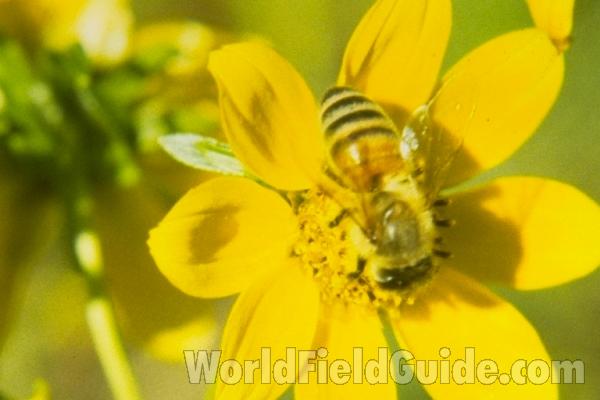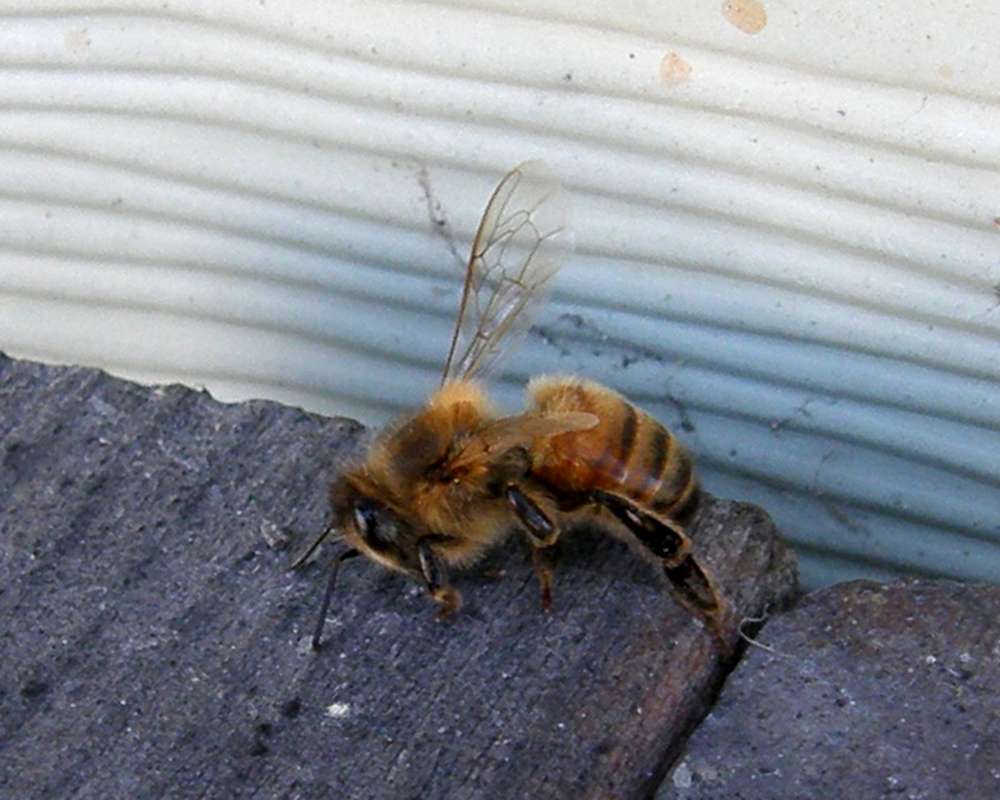SPECIES INFO
Honey Bee (Apis mellifera) is probably the world's most beneficial insect. Their role in pollinating orchard crops and clover fields cannot be underestimated. One reference indicates that clover seed can be increased fourfold by the introduction of a hive near a field.
The Honey Bee is found worldwide and is usually kept in manmade hives where large colonies of the bees live. These bees are very social and have three different castes. The queens have the responsibility of laying the eggs. The drones have the responsibility of fertilizing the queen. The workers carry on the work in the hive.
An aggressive strain of this species is the killer bee that is found in the tropics. Lately, this swarming species has begun to spread northward. There is some concern that they might spread throughout the United States.Honey and Bumble Bees (Family Apidae) are very important economically for both their honey and their role in plant pollination.
Apidae Family (bees) contains over 3,500 species bees living in North America.
Hymenoptera Order contains the ants, wasps, and bees. There are more than one hundred thousand species in this order in the world. The United States has approximately sixteen thousand species. The larvae resemble caterpillars or maggots. Many of the species in this order are social with different tasks performed by different members of the colony.
Insects (Class Insecta) are the most successful animals on Earth if success is measured by the number of species or the total number of living organisms. This class contains more than a million species, of which North America has approximately 100,000. (Recent estimates place the number of worldwide species at four to six million.)
Insects have an exoskeleton. The body is divided into three parts. The foremost part, the head, usually bears two antennae. The middle part, the thorax, has six legs and usually four wings. The last part, the abdomen, is used for breathing and reproduction.
Although different taxonomists divide the insects differently, about thirty-five different orders are included in most of the systems.
The following abbreviated list identifies some common orders of the many different orders of insects discussed herein:
Odonata: - Dragon and Damsel Flies
Orthoptera: - Grasshoppers and Mantids
Homoptera: - Cicadas and Misc. Hoppers
Diptera: - Flies and Mosquitoes
Hymenoptera: - Ants, Wasps, and Bees
Lepidoptera: - Butterflies and Moths
Coleoptera: - Beetles
Jointed Legged Animals (Phylum Arthropoda) make up the largest phylum. There are probably more than one million different species of arthropods known to science. It is also the most successful animal phylum in terms of the total number of living organisms.
Butterflies, beetles, grasshoppers, various insects, spiders, and crabs are well-known arthropods.
The phylum is usually broken into the following five main classes:
Arachnida: - Spiders and Scorpions
Crustacea: - Crabs and Crayfish
Chilopoda: - Centipedes
Diplopoda: - Millipedes
Insecta: - Insects
There are several other "rare" classes in the arthropods that should be mentioned. A more formal list is as follows:
Sub Phylum Chelicerata
C. Arachnida: - Spiders and scorpions
C. Pycnogonida: - Sea spiders (500 species)
C. Merostomata: - Mostly fossil species
Sub Phylum Mandibulata
C. Crustacea: - Crabs and crayfish
Myriapod Group
C. Chilopoda: - Centipedes
C. Diplopoda: - Millipedes
C. Pauropoda: - Tiny millipede-like
C. Symphyla: - Garden centipedes
Insect Group
C. Insecta: - Insects
The above list does not include some extinct classes of Arthropods such as the Trilobites.
Animal Kingdom contains numerous organisms that feed on other animals or plants. Included in the animal kingdom are the lower marine invertebrates such as sponges and corals, the jointed legged animals such as insects and spiders, and the backboned animals such as fish, amphibians, reptiles, birds, and mammals.





